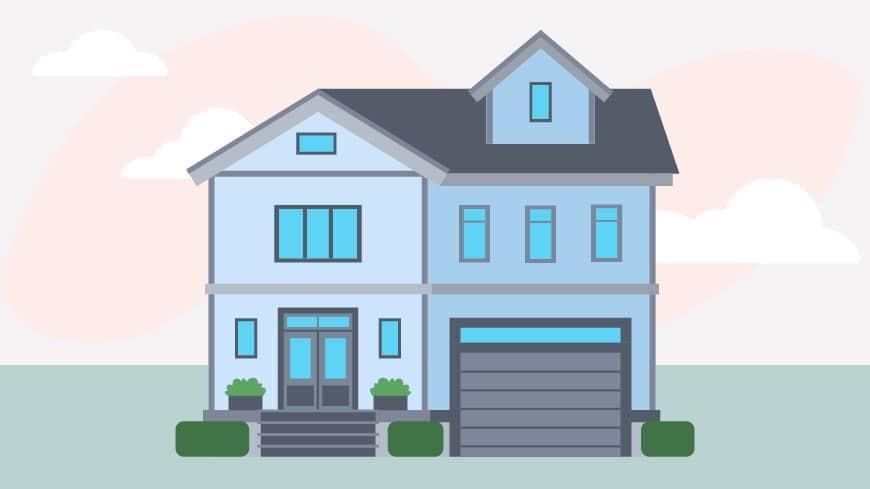Bank statements for mortgages: Everything you need to know

Before handing over thousands of dollars in home financing, your lender needs to make sure you’re capable of paying it back. While there are consequences for missed payments, such as compounding interest and the possibility of foreclosure, you’ll need to prove you can afford a mortgage from the outset.
In addition to your credit report, bank statements provide the insight creditors need to understand your financial background and how much of a loan you can handle.
What is a bank statement?
Bank statements are reports that offer a snapshot of your recent banking activity. These documents are typically received monthly or quarterly from your bank via the mail, or can be accessed electronically. In addition to helping lenders determine your creditworthiness throughout the mortgage process, bank statements are a vital tool in managing personal finances. With a detailed description of every purchase made since your last statement, you’ll be well equipped to track your spending habits and keep an eye out for fraudulent activity.
Every bank organizes their own statements a little differently, but they will always include a breakdown of your recent deposits and withdrawals.
Deposits
The deposit section on your bank statement illustrates the amount of money going into your account. Your paycheck, cashed checks and wired funds all qualify as deposits.
If you’ve received any large cash gifts to cover the down payment or closing costs on your mortgage, the deposit, and evidence of source will need to be properly documented and verified by your lender as acceptable under their guidelines.
Withdrawals
The other main section of your bank statement will indicate account withdrawals, or any money you’ve taken out of your account. Whenever you use your debit card or take money out of an ATM, it’s tracked under the withdrawal section.
Much like deposits, irregular or untraceable activity will send up red flags for your lender, potentially hurting your mortgage approval chances.
What do mortgage lenders look for in bank statements?
Simply put, your mortgage lender needs to confirm you have enough money coming into your account to handle your monthly payments and all the expenses required to close the loan. In addition to your paystubs, W-2s and tax returns, bank statements help your lender build the full picture of your financial background.
You’ll likely be required to provide bank statements going back two months before your mortgage application, but that time frame can vary from lender to lender. The amount you have in your savings account will also be scrutinized to ensure you have at least enough capital hand to cover your mortgage payment for a few months.
In addition to verifying you can afford to buy a home, bank statements also reveal any red flags that can make your lender hesitant to approve a loan. Unfortunately, fraud and money laundering have been used to take advantage of home financing in the past, so your creditor will be interested in learning more about these potential issues:
- Multiple overdrafts
- Undocumented deposits
- Irregular payment activities
- Unstable income & pay stubs
- Insufficient funds
Multiple overdrafts
One of the most common red flags your lender will look out for is a history of bounced checks and overdraft charges. This kind of activity can indicate disorganized or irresponsible money-management skills and could significantly impact your chances of approval.
Non-sufficient fund fees, or NSFs, will also appear on your bank statement if you’ve written checks without enough money in your account. These charges have been identified by Freddie Mac as specifically problematic when they appear on an applicant’s statement. If you have a history of NSFs, you should expect a little more scrutiny when you apply for a mortgage.
Undocumented deposits
As we mentioned earlier, bank statements with large deposits lacking a verified and acceptable source can make your creditor reluctant to approve financing.
Large deposits, which the Fannie Mae Seller’s Guide defines as “a single deposit that exceeds 50% of the total monthly qualifying income for the loan,” could possibly arouse suspicion of illegal activity. As the buyer, you legally cannot accept financial assistance from a party that stands to gain from the home sale going through, such as a real estate agent or mortgage broker. Your lender might assume that an unverifiable deposit could be concealing such a scheme, and would require proof of how the funds were obtained.

Irregular payment activities
Before you apply for a mortgage, you’ll want to make sure all of your monthly payments correspond to a disclosable credit account. Large or sporadic withdrawals without a traceable destination could give your lender the idea you’re paying off an undocumented debt, which would hurt your ability to afford a home loan.
If you’ve received a private or personal loan from an individual rather than a bank, that financial arrangement would need to be properly recorded and certifiable by your lender.
If a close friend of a family member wants to help with your homebuying ambitions by paying some of the expenses, they’ll need to have the transfer of funds documented via their own bank statement or deposit slips, depending on your lender's requirements.
Unstable income & pay stubs
You’ll need a stable source of income in order to secure financing, which will show up on your bank statement whenever you receive regular funds like paychecks, royalty payments or alimony deposits.
If the source of these deposits has been unreliable, or your level of income has changed, your lender will likely ask for an explanation. It’s always good to keep your personal income changes well documented in the event that your creditor requests them. An accepted offer letter from a new job, for example, would establish an income change in writing and help your lender better understand your financial situation.
Mortgage applicants usually provide two months’ worth of bank statements, but if you’re self-employed, your income might be a bit more sporadic. In this scenario, you could be required to provide bank statements that cover a longer stretch of time.
Insufficient funds
Your withdrawals and deposits might be the main focus of your bank statement, but creditors will take a close look at your level of savings as well. Unexpected costs like hospital bills or auto repairs might have eaten into your savings, and your lender will need to know you still have enough to cover the costs of closing the loan.
Each creditor sets their own standard for applicant savings amounts, but they’ll typically want to make sure you can cover the down payment and closing costs on your own.
In conclusion
A great step to take before applying for a mortgage is to better understand and organize your financial documentation. Not only do bank statements play a vital role in the mortgage process, but they act as an immensely useful tool in understanding your own financial health.
By tracking your individual bank statements, you’ll be better suited to report on your banking activity, avoid overdraft fees and continue working toward your real estate goals.




